At Zenitech, we have an approach to development that says: “there’s always a better way.” Our team is constantly looking at how things are done now, and challenging it, asking our team if there’s a new, or quicker, or more cost efficient, or simpler way to achieve what we and our clients need.
To do that means creating a process for innovation. Innovation doesn’t happen in isolation, and it’s rarely the case that you discover a whole new technology alone and overnight. More often, innovation happens in increments, and in groups, like so many things. One small part of a process can be improved or refined. And when you improve lots of small things, that adds up to a big thing.
There is always innovation in every company, particularly technology companies. But it’s easy for it to exist in siloes. The trick is how you break siloes to harness that innovation, learn from it, and replicate it across multiple development teams in different parts of the business. In small companies and teams, that innovation might happen naturally. As you scale, you need to systemise it.
So we’ve invested in developing a process to do this.
When Autsoft and Zenitech became a single entity in September last year, one of the many things the two organisations had in common was incredibly creative and innovative development teams. We wanted to find a way for those teams to share ideas and innovations across teams and regions. We fundamentally believe that tech communities should be part of something bigger, working together across functions to find ways to constantly improve the quality of the technology we create. Our goal is to build and maintain a culture of creativity and innovation that exists beyond country borders.
Some of our founding principles at Zenitech, encoded in our company values and core approach ‘pillars’, are to grow consistently, to create processes for innovation, and to simplify wherever we can. Investing in ways to support these principles is important to us, so creating a system where our teams can pool ideas and use that learning to grow their skills makes sense.
That’s why we’ve introduced an innovation incubation tool, a piece of software that anyone in any part of the business, at any time, can use to submit an idea, which will then be reviewed by our developers. Often, we find that more than one team across the business has come across the same problem, so a solution submitted by one person might solve an issue for many clients, or colleagues, in different regions. Our developers review and upvote ideas, and build on them where needed. Then the ideas go forward to an innovation team of tech community leads – including developers, architects, engineers and delivery teams – who assess each idea for its company value and commercial viability.
We have a scoring system based on the idea’s impact on the company, on developers, on opportunities for sales, and on cost. Then it is categorised either as something to be developed right now, or scheduled for future development, or set aside for now.
Next comes the experimental phase. Our tech communities discuss each idea internally, and the owner is given the opportunity to modify it, or add remarks and comments. We create a solution canvas to look at the problem the idea addresses, and whether this is the best solution to fix it. Sometimes an idea highlights a really interesting problem that needs solving, but potentially with a different fix, so at this stage we can brainstorm the solution. The idea is modified and changed, pulled apart and put back together again.
Once it’s accepted, it goes back to the community for investigation. Some ideas are so obviously good ones they are approved for investment right away. Others need more research, for example market research for a new product.
Then we go to the proof-of-concept stage. The idea is developed and tested, to see if it generates the desired results. If it takes longer than a month to develop, it is regularly reviewed by the innovation council to make sure it’s still fit for purpose.
Once it’s ready and tested, it goes into production, to create a minimum viable product. This is based on live feedback from clients and developers.
We’ve created some great work on this basis. Ideas that we’ve invested in include new supply chain management solutions, innovative EV charging technology, smart manufacturing digitisation frameworks, and even more efficient sales processes.
It’s great for our development team, who are constantly learning from each other, and building on each other’s ideas; it’s good for our business, as we streamline our internal processes and practices; and it’s good for our clients, who benefit from the experience and learnings from all the projects we’re working on.
It’s incredibly exciting for all our teams to see their ideas being invested in and come to fruition, implemented across different commercial environments and in different countries. It means we’re always growing, learning and investing in our knowledge, to embed innovation across Zenitech.
And that’s a great motivation to keep innovating.



